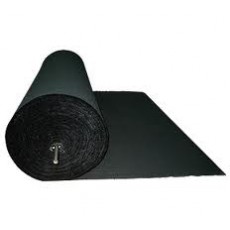
Gas Diffusion Layers (GDL) are one of the components in different types of fuel cells including, but not limited, to Proton Exchange Membrane and Direct Methanol fuel cells. Gas Diffusion Layers serve to provide conductivity in the cell and control the contact between the reactant gases and the catalyst. This layer also aids in managing the water transport out of the membrane. Another essential function of a GDL is to provide a connection between the membrane electrode assembly and graphite plates in the fuel cell stack.
The Fuel Cell Store carries the largest selection of Gas Diffusion Layers in the world! We help you compare all the Gas Diffusion Layers we offer in one simple file so you can narrow down the perfect GDL for your project. With our Gas Diffusion Layer Comparison Table you can compare the specifications of all our carbon papers, carbon cloths, and carbon felts with ease.
If you still need further help selecting a GDL or have any questions, please contact us at sales@fuelcellstore.com.
 Gas Diffusion Layer Comparison Table
Gas Diffusion Layer Comparison Table
 Gas Diffusion Layer Comparison Table
Gas Diffusion Layer Comparison Table
 Gas Diffusion Layer Comparison Table
Gas Diffusion Layer Comparison Table
Gas Diffusion Layers (GDL) are one of the components in different types of fuel cells including, but not limited, to Proton Exchange Membrane and Direct Methanol fuel cells. Gas Diffusion Layers serve to provide conductivity in the cell and control the contact between the reactant gases and the catalyst. This layer also aids in managing the water transport out of the membrane. Another essential function of a GDL is to provide a connection between the membrane electrode assembly and graphite plates in the fuel cell stack.
The Fuel Cell Store carries the largest selection of Gas Diffusion Layers in the world! We help you compare all the Gas Diffusion Layers we offer in one simple file so you can narrow down the perfect GDL for your project. With our Gas Diffusion Layer Comparison Table you can compare the specifications of all our carbon papers, carbon cloths, and carbon felts with ease.
If you still need further help selecting a GDL or have any questions, please contact us at sales@fuelcellstore.com.
 Gas Diffusion Layer Comparison Table
Gas Diffusion Layer Comparison Table
 Gas Diffusion Layer Comparison Table
Gas Diffusion Layer Comparison Table
 Gas Diffusion Layer Comparison Table
Gas Diffusion Layer Comparison Table
| Gas Diffusion Layer | Material Type | PTFE Treatment | Microporous Layer | Thickness | Basic Weight | Air Permeability | Electrical Resistivity - Through Plane |
|---|---|---|---|---|---|---|---|
| Units | (microns) | (g/m2) | (s) | (mΩcm2) | |||
| Carbon Cloth Wet Proofed | Woven Carbon Fiber (cloth) | Yes | No | 360 | 125 | < 6 | < 5 |
| Carbon Cloth with MPL (W1S1011) | Woven Carbon Fiber (cloth) | Yes | Yes | 410 | 200 | < 55 | < 13 |
| Carbon Cloth with MPL (W1S1010) | Woven Carbon Fiber (cloth) | Yes | Single-Sided | 365 | 175 (± 5) | < 27 | < 14 |
| Carbon Cloth without MPL (W0S1009) | Woven Carbon Fiber (cloth) | No | No | 330 | 120 | < 10 | < 5 |
| ELAT Hydrophilic Plain Cloth | Woven Carbon Fiber (cloth) | No | No | 406 | 130 | 2.156L/(m2*sec*Pa) | 340 @ 400 lb load using a 100 cm2 sample |
| ELAT LT1400 | Woven Carbon Fiber (cloth) | Yes | Single-Sided | 454 | 170 | 0.104L/(m2*sec*Pa) | 0.17 @ 400 lb load using a 100 cm2 sample |
| ELAT LT2400W | Woven Carbon Fiber (cloth) | Yes | Yes | 490 | 250 | 10 ml/(cm2-sec) | 0.002 Ωcm (bulk) |
| Panex PW03 Carbon Fiber Fabric | Woven Carbon Fiber (cloth) | No | No | 406.4 | 14 | ||
| Panex PW06 Carbon Fiber Fabric | Woven Carbon Fiber (cloth) | No | No | 508 | 14 | ||
| AvCarb Plain Carbon Cloth 1071 HCB | Carbon Fiber Cloth | No | No | 356 | 132 g/m2(3 oz, 9 yds) | ||
| AvCarb EP40 | Carbon Paper Substrate | No | No | 200 | 36 | 4.5 | 8 |
| AvCarb EP40T | Carbon Paper Substrate | Yes | No | 200 | 43 | 7.5 sec/100cc | 8 |
| AvCarb EP55 | Carbon Paper Substrate | No | No | 262 | 51 | 5.0 sec/100cc | |
| AvCarb EP55T | Carbon Paper Substrate | Yes | No | 270 | 57 | 4.0 sec/100cc | |
| AVCarb G475A | Soft Graphite Battery Felt | No | No | 4700 | < 200 | ||
| AvCarb G300A | Soft Graphite Battery Felt | No | No | 3400 | |||
| AvCarb GDS1120 | Carbon Fiber Paper | Yes | Single-Sided | 184 | 79 | ||
| AvCarb GDS2120 | Carbon Fiber Paper | Yes | Single-Sided | 248 | 101 | < 14 | |
| AvCarb GDS2185 | Carbon Fiber Paper | Yes | Single-Sided | 252 | 154 | 22 | |
| AvCarb GDS22100 | Carbon Fiber Paper | Yes | Single-Sided | 330 | 185 | < 17 | |
| AvCarb GDS2230 | Carbon Fiber Paper | Yes | Single-Sided | 275 | 98 | < 14 | |
| AvCarb GDS2240 | Carbon Fiber Paper | Yes | Single-Sided | 275 | 110 | < 14 | |
| AvCarb GDS2255 | Carbon Fiber Paper | Yes | Single-Sided | 276 | 151 | 20 | |
| AvCarb GDS2300 | Carbon Fiber Paper | Yes | Single-Sided | 260 | 100 | 11 | |
| AvCarb GDS3250 | Carbon Fiber Paper | Yes | Single-Sided | 225 | 75 | < 14 | |
| AvCarb GDS3260 | Carbon Fiber Paper | Yes | Single-Sided | 210 | 80 | < 14 | |
| AvCarb GDS5130 | Carbon Fiber Paper | Yes | Single-Sided | 283 | 70 | 11 | |
| AvCarb MB30 | Carbon Fiber Paper | Yes | Single-Sided | 205 | 55 | < 12 | |
| AvCarb MGL 190 | Molded Graphite Laminate | No | No | 190 | 0.44 | 75 | |
| AvCarb MGL 280 | Molded Graphite Laminate | No | No | 280 | 0.44 | 75 | |
| AvCarb MGL 370 | Molded Graphite Laminate | No | No | 370 | 0.46 | 75 | |
| AvCarb P50 | Carbon Paper Substrate | No | No | 170 | 150 | 35 sec/100cc through plane | |
| AvCarb P50T | Carbon Paper Substrate | Yes | No | 180 | 62 | 50 sec/100cc through plane | 11.7 |
| AvCarb P75 | Carbon Paper Substrate | No | No | 245 | 75 | 15 sec/100cc through plane | 7.8 |
| AvCarb P75T | Carbon Paper Substrate | Yes | No | 255 | 85 | 25 sec/100cc through plane | 13.4 |
| Freudenberg H14 | Carbon Fiber Paper | No | No | 150 | 65 | 570 l/m2 • s | 4 |
| Freudenberg H14C10 | Carbon Fiber Paper | Yes | Single-Sided | 170 | 97 | 1.4 µm2 (@ 1MPa) | 5 |
| Freudenberg H14Cx653 | Carbon Fiber Paper | Yes | Single-Sided | 185 | 94 | 1.0 µm2 (@ 1MPa) | 6 |
| Freudenberg H15 | Carbon Fiber Paper | No | No | 155 | 65 | 600 l/m2 • s (at 200Pa pressure drop) | 5.5 |
| Freudenberg H15C13 | Carbon Fiber Paper | Yes | Single-Sided | 195 | 93 | 2.7 µm2 (@ 1MPa) | 9 |
| Freudenberg H15C14 | Carbon Fiber Paper | Yes | Single-Sided | 191 | 91 | 7.3 | |
| Freudenberg H23 | Carbon Fiber Paper | No | No | 210 | 95 | 400 l/m2 • s (at 200Pa pressure drop) | 4.5 |
| Freudenberg H23Cx653 | Carbon Fiber Paper | Yes | Single-Sided | 250 | 130 | 1.4 µm2 (@ 1MPa) | 7 |
| Freudenberg H23C2 | Carbon Fiber Paper | No | Yes, with 40% PTFE binder | 255 | 135 | 70 | 10 |
| Freudenberg H23C3 | Carbon Fiber Paper | Yes | Single-Sided | 290 | 150 | 35 | 9 |
| Freudenberg H23C6 | Carbon Fiber Paper | Yes | Single-Sided | 250 | 135 | 70 | 8 |
| Freudenberg H23C8 | Carbon Fiber Paper | Yes | Single-Sided | 230 | 135 | 90 | 8 |
| Freudenberg H23C9 | Carbon Fiber Paper | Yes | Single-Sided | 250 | 135 | 30 | 8 |
| Freudenberg H23I2 | Carbon Fiber Paper | Yes | No | 210 | 115 | 160 l/m2 • s (at 200Pa pressure drop) | 7 |
| Freudenberg H24C5 | Carbon Fiber Paper | No | Single-Sided | 270 | 130 | 40 | 9 |
| Freudenberg H24Cx483 | Carbon Fiber Paper | Yes | Single-Sided | 250 | 135 | 1.5 µm2 (@ 1MPa) | 8 |
| CT GDS090S | Carbon Fiber Paper | No | No | 90 | 50 | < 50 | < 6 |
| CT GDL340 | Carbon Fiber Paper | Yes | Yes | 340 | 125 | < 200 | < 10 |
| CT GDL240 | Carbon Fiber Paper | Yes | Yes | 240 | 90 | < 85 | < 15 |
| CT GDL 210SHT | Carbon Fiber Paper | Yes | Yes | 210 | 85 | < 225 | < 10 |
| CT GDS180SHT | Carbon Fiber Paper | No | No | 180 | 50 | < 10 | < 5 |
| CT GDL120S | Carbon Fiber Paper | Yes | Yes | 120 | 80 | < 100 | < 15 |
| CT GDS210 | Carbon Fiber Paper | No | No | 210 | 50 | < 10 | < 6 |
| CT GDS230 | Carbon Fiber Paper | No | No | 230 | 65 | < 10 | < 6 |
| CT GDS250 | Carbon Fiber Paper | No | No | 250 | 65 | <10 | < 6 |
| CT GDS310 | Carbon Fiber Paper | No | No | 310 | 80 | < 10 | < 5 |
| CT GF065 Graphite Felt | Graphite Felt | No | No | 6500 | 590 | ||
| CT GF100 Graphite Felt | Graphite Felt | No | No | 10,000 | 500 - 800 | ||
| CT CF120 Carbon Felt | Carbon Felt | No | No | 12,000 | 800 | ||
| CT GF020 Graphite Felt | Graphite Felt | No | No | 2000 | |||
| CT GF030 Graphite Felt | Graphite Felt | No | No | 3000 | |||
| CT GDS180S | Carbon Fiber Paper | No | No | 180 | 50 | < 10 | < 7 |
| CT GDL210S | Carbon Fiber Paper | Yes | Yes | 210 | 85 | < 225 | < 15 |
| Sigracet 22 BB | Carbon Fiber Paper | Yes, 5% | Single-Sided | 215 | < 10 | ||
| Sigracet 25 BC | Carbon Fiber Paper | Yes, 5% | Single-Sided | 235 | 86 ± 10 g/m2 | 1.00 ± 0.60 cm3/(cm2 • s) | < 12 |
| Sigracet 28 AA | Carbon Fiber Paper | No | No | 190 | 55 ± 10 g/m2 | < 4 | |
| Sigracet 28 BC | Carbon Fiber Paper | Yes, 5% | Single-Sided | 235 | |||
| Sigracet 29 AA | Carbon Fiber Paper | No | No | 180 | 32 ± 7 | < 5 | |
| Sigracet 36 AA | Carbon Fiber Paper | No | No | 225 | < 4 | ||
| Sigracet 36 BB | Carbon Fiber Paper | Yes, 5% | Single-Sided | 280 | < 12 | ||
| Sigracet 38 AA | Carbon Fiber Paper | No | No | 280 | < 5 | ||
| Sigracet 38 BC | Carbon Fiber Paper | Yes, 5% | Single-Sided | 325 | 0.2 - 0.4 cm3/(cm2 • s) | < 11 | |
| Sigracet 39 AA | Carbon Fiber Paper | No | No | 280 | 50 ± 10 | < 5 | |
| Sigracet 39 BB | Carbon Fiber Paper | Yes, 5% | Single-Sided | 315 | < 13 | ||
| Spectracarb 2050A-1550 | Carbon Fiber Paper | No | No | 381 | 175 | 35 cfm/ft2 | 15 |
| Toray Carbon Paper 030, Wet Proofed | Carbon Fiber Paper | Yes, 5% | No | 110 | 80 | ||
| Toray Carbon Paper 060, Wet Proofed | Carbon Fiber Paper | Yes, 5% | No | 190 | 80 | ||
| Toray Carbon Paper 060 with MPL | Carbon Fiber Paper | Yes | Yes | 250 | |||
| Toray Carbon Paper 090, Wet Proofed | Carbon Fiber Paper | Yes, 5% | No | 280 | 80 | ||
| Toray Carbon Paper 090 with MPL | Carbon Fiber Paper | Yes | Yes | 340 | |||
| Toray Carbon Paper 120, Wet Proofed | Carbon Fiber Paper | Yes, 5% | No | 370 | 80 | ||
| Toray Carbon Paper 120 with MPL | Carbon Fiber Paper | Yes | Yes | 430 |

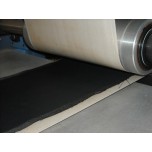

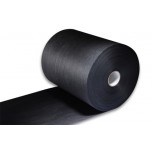
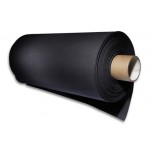
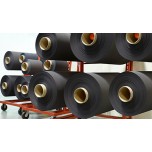
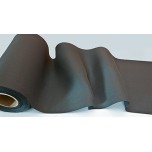

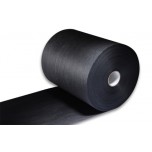
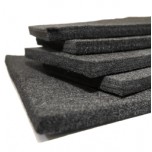
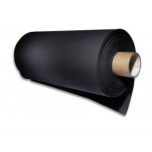





















Enter the code in the box below: